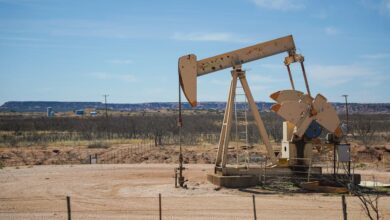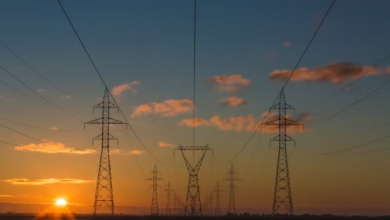The Complex World of Oil Sands: Extraction, Environmental Impact, and Future Trends in the Global Oil Market

The extraction and processing of oil from sand deposits, commonly referred to as oil sands, has become a focal point in discussions surrounding energy security and environmental sustainability. As global oil demand continues to rise, understanding the intricacies of oil sands—ranging from extraction techniques to the environmental impacts—is essential for comprehending their role in the ever-evolving oil market. With fluctuating oil prices and the influence of OPEC, the significance of oil sands cannot be understated, especially as they relate to traditional oil reserves, shale oil, and offshore drilling. This article delves into the complexities of oil sands, exploring extraction methods and their environmental implications, while also assessing the trends and future prospects of oil sands in the global oil trade. Furthermore, we will examine the challenges associated with oil refining and transportation, including the navigation of oil supply chains and the implications for oil compliance and regulation. As we explore these critical facets, a clearer picture of oil consumption, biofuels, oil alternatives, and the geopolitics of oil will emerge, providing valuable insights for investors and stakeholders in the oil industry. Join us as we unpack the multifaceted world of oil sands and their impact on the broader energy landscape.
- 1. Understanding Oil Sands: Extraction Techniques and Environmental Impacts
- 2. The Role of Oil Sands in the Global Oil Market: Trends and Future Prospects
- 3. Oil Refining and Transportation: Navigating the Challenges of Oil Supply Chains
1. Understanding Oil Sands: Extraction Techniques and Environmental Impacts
Oil sands, also known as tar sands, represent a significant source of crude oil that requires specialized extraction techniques due to the unique nature of the deposits. These sands are a mixture of sand, clay, water, and bitumen, a thick and heavy form of crude oil. Extracting bitumen from oil sands can be performed primarily through two methods: surface mining and in-situ techniques.
Surface mining is employed when oil sands are located near the surface. This process involves removing layers of soil and rock to access the oil sands beneath. Once extracted, the bitumen is separated from the sand using hot water and chemicals. In-situ techniques, on the other hand, are used for deeper deposits. These methods involve injecting steam or solvents into the ground to reduce the viscosity of the bitumen, allowing it to flow more easily to the surface. Both methods, while effective for oil extraction, come with substantial environmental impacts, including habitat destruction, water usage, and greenhouse gas emissions.
The environmental impact of oil sands extraction is a growing concern in the context of global oil trade and energy security. As oil prices fluctuate, driven by factors such as OPEC decisions and geopolitical tensions, the demand for alternative energy sources becomes more pronounced. Biofuels and other oil alternatives are increasingly explored as society seeks to reduce dependence on fossil fuels. However, the extraction and processing of oil from sands contribute significantly to the carbon footprint of oil consumption and raise questions about sustainability.
Oil market trends also reflect the complexities of oil sands in the broader context of oil transportation and storage. The infrastructure required for moving oil sands products includes an extensive network of pipelines, which can pose risks to local ecosystems. As oil field services evolve, new technologies are being developed to mitigate some environmental impacts, but challenges remain in oil regulation and compliance.
As investment in oil sands continues, stakeholders must navigate the delicate balance between meeting energy demands and addressing the environmental implications of oil extraction. The global oil supply chains are influenced by the extraction of oil from sands, impacting everything from oil refining processes to petrochemical production. Understanding these dynamics is crucial for those interested in oil investing, as it can inform strategies for oil price hedging and navigating the complexities of oil geopolitics.
In conclusion, while oil sands offer a significant source of crude oil, the extraction techniques utilized and their associated environmental impacts must be critically examined. As the world moves towards cleaner energy solutions, the future of oil sands will undoubtedly play a pivotal role in shaping global energy policies and consumption patterns.
2. The Role of Oil Sands in the Global Oil Market: Trends and Future Prospects
The role of oil sands in the global oil market is increasingly significant as we witness shifting dynamics in oil consumption and production. Oil sands, primarily found in Canada and Venezuela, have become a crucial source of crude oil, especially as traditional oil reserves diminish. These deposits are vital for energy security, providing a reliable supply of oil amidst fluctuating global oil prices and geopolitical uncertainties.
Recent trends indicate that oil sands production is becoming more competitive due to advancements in oil technologies, which enhance extraction and processing efficiency. With the rising demand for crude oil, especially in emerging economies, oil sands are positioned to play a pivotal role in meeting this demand. However, the environmental impact of oil sands extraction has raised concerns among stakeholders, prompting discussions about oil regulation and compliance measures aimed at reducing carbon emissions.
In the context of the global oil trade, OPEC's strategies and the rise of shale oil production in the United States have created a complex interplay of supply chains. As oil prices continue to fluctuate, oil price hedging becomes essential for investors and companies involved in oil production, including those in the oil sands sector. Moreover, the increasing interest in biofuels and oil alternatives is shaping market trends, compelling traditional oil producers to adapt their strategies.
Oil transportation infrastructure, including oil pipelines and storage facilities, is critical for the efficient distribution of oil sands-derived crude oil. As oil field services evolve, companies are focusing on optimizing oil refining processes to create value from these heavy crude sources. Furthermore, the integration of natural gas into the energy mix has introduced new opportunities for oil sands, with potential for co-production and improved overall energy efficiency.
Looking ahead, the future prospects of oil sands will be influenced by global oil market trends, including shifts in consumer preferences and technological innovations that address environmental concerns. As the world navigates the challenges of energy transition, oil sands will remain a vital component of the global oil landscape, balancing the need for energy with the imperative for sustainable practices.
In conclusion, the evolving role of oil sands in the global oil market reflects broader trends in oil consumption, energy security, and geopolitical dynamics, making it an area of continued interest for oil investing and exploration.
3. Oil Refining and Transportation: Navigating the Challenges of Oil Supply Chains
The process of oil refining and transportation is crucial in navigating the complexities of oil supply chains, especially in the context of oil sands. As crude oil is extracted from these deposits, it undergoes refining to convert it into usable products like gasoline, diesel, and petrochemicals. The refining process itself is energy-intensive and can significantly impact oil prices, especially when considering the current trends in the oil market.
In recent years, the global oil trade has faced numerous challenges, including fluctuating oil prices driven by geopolitical tensions, regulatory changes, and shifts in demand patterns. OPEC's decisions can heavily influence market dynamics, affecting both upstream and downstream oil activities. Additionally, the rise of shale oil production in North America has transformed the landscape, creating a more competitive environment for traditional oil sands operations.
Transportation of oil is another critical component of the supply chain, with oil pipelines playing a central role in moving crude oil from extraction sites to refineries. However, issues such as oil storage capacity and the need for compliance with environmental regulations have posed challenges in ensuring a steady flow of crude oil. The environmental impact of oil, particularly from oil sands, has led to increasing scrutiny and calls for greater accountability in oil field services and exploration practices.
Moreover, energy security remains a paramount concern for many nations, prompting investments in oil alternatives like biofuels and natural gas. As the oil consumption landscape evolves, stakeholders are exploring oil price hedging strategies to mitigate financial risks associated with price volatility. Understanding these intricate dynamics is essential for oil investors and policymakers alike, as the future of oil geopolitics will undoubtedly shape the direction of oil technologies and regulatory frameworks.
In summary, effectively navigating the challenges of oil refining and transportation requires a comprehensive understanding of the interconnectedness of oil supply chains, market trends, and the regulatory landscape. As the industry adapts to changing environmental expectations and technological advancements, the focus on sustainable practices will be crucial for the long-term viability of oil sands and the broader oil market.
In conclusion, the extraction and processing of oil from sand deposits, commonly known as oil sands, play a significant role in the global oil market. As we have explored, the techniques involved in oil sands extraction come with notable environmental impacts that cannot be overlooked. The ongoing evolution of oil market trends indicates a complex landscape where oil sands are both a solution to energy security and a challenge due to their environmental footprint.
As the demand for crude oil continues to shape global trade dynamics, oil refining and transportation remain critical components in navigating the complexities of oil supply chains. The interplay between oil prices, OPEC decisions, and the rise of shale oil and offshore drilling highlights the geopolitical dimensions of oil consumption. Furthermore, advancements in oil technologies and the push for biofuels and oil alternatives are reshaping the future of energy.
Investors and stakeholders in the oil industry must remain vigilant in understanding these trends, particularly in light of oil price hedging strategies and the regulatory landscape surrounding oil compliance. As we move forward, the focus should shift towards sustainable practices that reduce the environmental impact of oil while ensuring that the industry adapts to changing energy needs. By balancing the benefits of oil sands with responsible practices and innovations, we can contribute to a more resilient and sustainable energy future.





